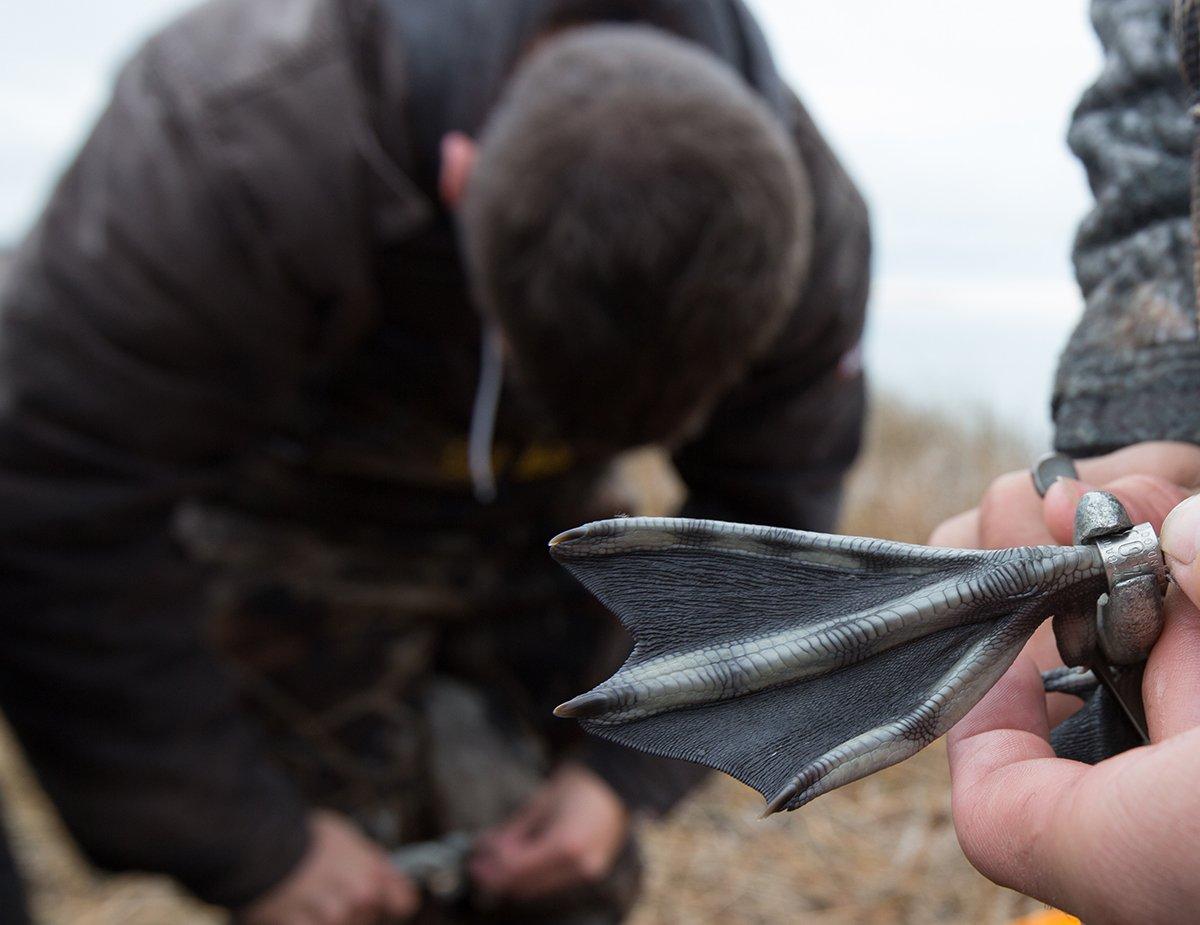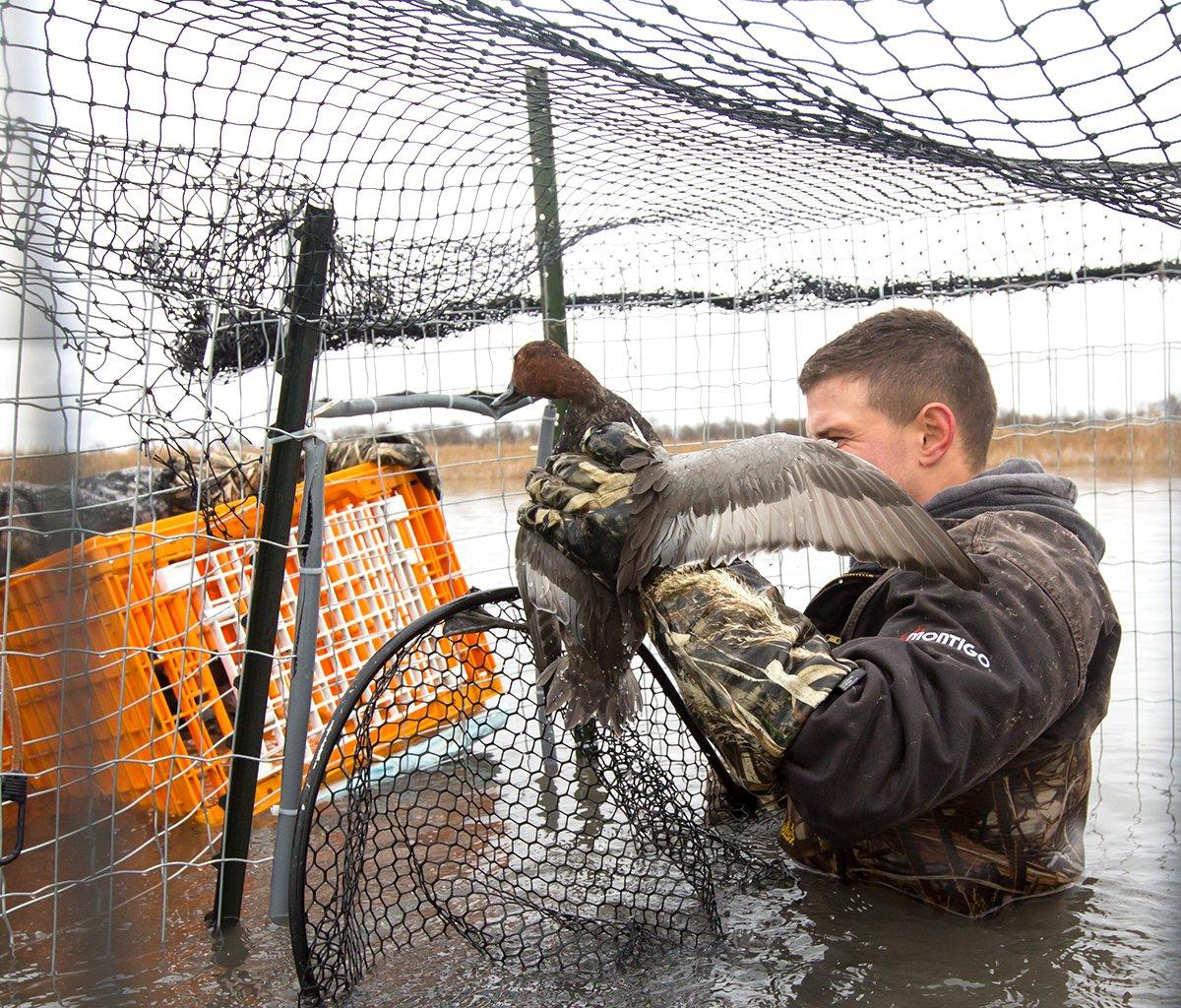Those silver surprises carry information critical for the future of ducks and geese
Banded birds have an undeniable cool factor, and hunters fortunate enought to shoot a bling-toting duck or goose are usually excited about adding jewelry to their lanyard and curious about the origin of their trophy.
But those bands and the information they carry mean much more. When recovered, that data gives waterfowl biologists powerful insights that boost management and research for the future of ducks, geese and other wildlife.
It's an absolutely awesome data set that ecologists, biologists, and wildlife people around the world use to answer broad questions on how animals live and die, said Dr. Michael Schummer, Roosevelt waterfowl ecologist at the State University of New York College of Environmental Science and Forestry, which trains waterfowl and wetlands scientists and conservationists. That's been vitally important for just science in general across the years.
Banding has been used for centuries. Federal banding programs were established in the 1920s after the Migratory Bird Treaty of 1918. Nowadays, conservation groups and management agencies band several thousand ducks and geese every year. The United States and Canada coordinate their banding work through the North American Bird Banding Program, jointly administered by the U.S. Geological Survey and Canadian Wildlife Service Bird Banding Office.
During banding programs, ducks, geese, and other birds are fitted with aluminum leg bands engraved with a number. The number and information on the age, sex, and species of the bird are sent to the federal Bird Banding Laboratory, part of the USGS, in Patuxent, Maryland, where it's kept in a database. Data is gathered through follow-up encounters with banded birds, which occur via hunter harvests or when researchers recapture banded fowl.
From 1960 through January 9, 2023, according to usgs.gov, the BBL has recorded banding data for more than 14.5 million ducks and more than 6.2 million geese. It's also recorded almost 2.23 million subsequent encounters (almost 16 percent) with banded ducks and almost 1.8 million (about 28.4 percent) with banded geese. The BBL's research focuses on North America, but birds are banded throughout the world, and the laboratory also has collaborative efforts with other countries.
Schummer said banding data provides insights into waterfowl migration, reproductive success, and population trends. Further, it lets researchers monitor the ratio of juveniles to adults and compile annual survival rates — especially the critical survival rates of adult females. Scientists then put that information to work managing waterfowl. For example, banding data was critical for increasing wood duck limits and recent revisions to Atlantic Flyway mallard limits.
Of course, after shooting a banded duck or goose, most waterfowlers immediately want to answer common questions: Where was the bird banded, and what type of journey brought it to this place? Hunters can receive that information almost instantly nowadays by using the USFWS' reportband.gov website.
I think that's what really fascinates waterfowl hunters, Schummer said. Migration in general is what attracts a lot of people to waterfowl hunting. These birds are coming thousands of miles, sometimes over short periods of time, and end up over your neighborhood or in front of your duck blind on a given day. If somebody gets a band, it's exciting to see where that bird came from. Some folks are lucky to get a fair number of bands in their lifetime, but some only get a few.
The next time your retriever brings back a bird with a shiny surprise, enjoy the moment, and get on reportband.gov. But also realize that although your encounter with that duck or goose might end its journey, the information supplied through its story will help ensure that the skies remain filled with migrating waterfowl for years to come.
(Don't miss: Duck Hunters Rescued from Kentucky Lake)
Click here for more Realtree waterfowl hunting content. And check us out on Facebook.










